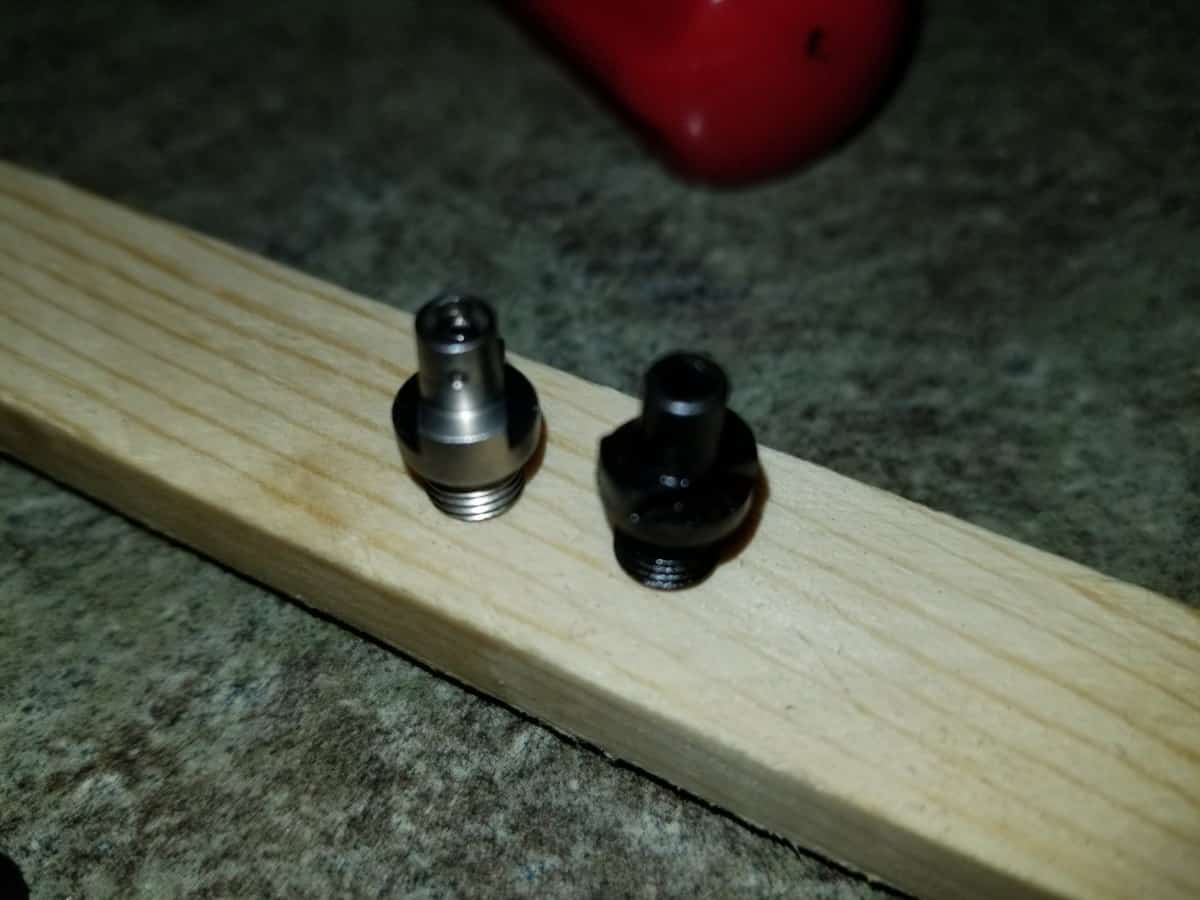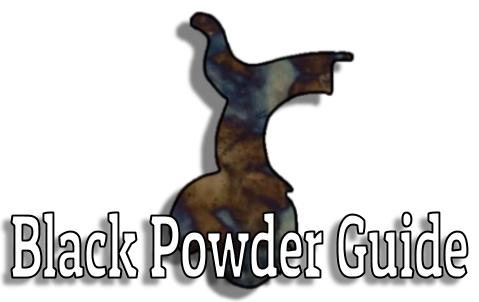Pulling the hammer back and touching off the trigger should result in a loud “boom” with a plume of smoke when shooting cap and ball revolvers.
What happens when it just goes “click”, or “pop” without a loud “boom” and smoke?
A black powder revolver will generally fail to fire for the following reasons:
- Cap Compromised or Nipple Vent Clogged
- Cap Jam in the Action
- Powder Wet or Compromised
- Powder Not Compacted Enough
- Light Main Spring
- Aftermarket Nipples too Short
When I got into black powder shooting, I wanted to know all the reasons a revolver might not fire so that I would know how to take care of it at the range like a pro. This article is to share what I’ve learned along the way!
I recommend proceeding through these steps in order since the build off of each other.
Reasons for Black Powder Revolver Failure to Fire
| Reason for Misfire | How to Fix | Notes |
|---|---|---|
| Caps Compromised or Nipple Vent Clogged | Run a non-ferrous pick through the nipple vent and seat a new cap | Easiest and fastest problem to rule out, especially for a single chamber that won't fire |
| Cap Jam | Use a pick to work out the cap from the base of the hammer, or disassemble completely to clean the action | Very common if you haven't taken steps to prevent; If multiple or all chambers fail to fire, this is definitely your issue |
| Powder is wet or compromised | Remove cylinder from revolver and unload (see link below in article for instructions) | |
| Powder not compacted enough | Ensure loading lever has seated the round completely, unload and properly reload if necessary | Very common with light powder charges relative to the size of your revolver |
| Light main spring | Ensure that your main spring screw is tight, and replace if necessary | Not common |
| Aftermarket nipples are too short | Replace with new nipples since the hammer is not making contact with the nipple with enough force to ignite the cap | Not common, but it has happened to some |
Caps Compromised or Nipple Vent Clogged
A cap that is a dud will ruin your chances of firing. It might have been faulty to begin with or maybe it got wet. Either way, it’s the simplest of fixes and all you need to do is replace it and try again.
Before doing so, I recommend running a thin copper/brass wire or pick through the nipple vent to make sure it isn’t clogged up with carbon fouling. You cap might have been fine, but if the spark can’t reach the powder due to a blockage, then a new cap won’t do you any good.
If cap jam and the cap issue didn’t solve the problem, we’ll move on to the next issue which is that the powder is wet or compromised.
Cap Jam in the Action
The only reason I would not believe this to be your most likely problem is if it is the first time you’ve ever shot your revolver, or the first time you’ve shot it since thoroughly cleaning and disassembling the entire revolver.
If your revolver is in “like new” condition, then there will be no cap in the action to cause this problem.
However, if you’ve shot even just a few rounds through it or even cleaned it but didn’t disassemble and clean the action, then this is where you want to start your quest for fixing your problem.
When your hammer strikes the nipple, it crushes the cap which sits between them. The cap can then fall down towards the base of the hammer when you next pull it back.
Cap-jam is a frustrating and very common problem with these firearms and there are some critical things you can do to greatly prevent them from happening. Check out my post here on steps you can take!
The next shot you take will flatten the cap and make it contour to the shape of the hammer and everything it touches. Eventually (maybe even after just one shot) the cap will cause the hammer to swing forward about 98% when you pull the trigger.
The last 2% is the flattened cap wedging between the base of the hammer and where it wants to be when released by the trigger.
Essentially, the hammer looks like it’s falling forward all the way, but it’s actually a couple hundredths of an inch from making complete contact with the cap, or if it does hit the cap it loses its momentum in the last 1-2% and doesn’t contact the cap with enough force to ignite it.
You can certainly try to get the jammed up cap out from the base of the hammer with an improvised pick like this one seen in the picture, which I normally use to vent the nipples from fouling. If that doesn’t work, you’ll have no choice but to stop what you’re doing and fully disassemble the revolver to get into the action.
Powder is Wet or Compromised
After you’ve ruled out the cap, the nipple vent, and cap jam, I would then be looking at my powder charge.
It’s really not hard to unload a single chamber (or even a full cylinder) of a black powder revolver, and that’s what you’re going to want to do. Unload, and then reload.
I have a full article here that you can check out that will guide you through the process with pictures to guide you through the unloading process.
Powder can become wet or compromised if you leave it loaded for a long time with a lubricated wad on top of the powder.
If the caps don’t seat properly (aren’t sized correctly) on the nipples then water or moisture could enter the nipple vent.
Failing to remove grease or oils from the inside of each chamber can also corrupt the powder charge.
Using a runny grease like Crisco on top of your round ball in hot weather can also get by especially if the round ball isn’t large enough to have a proper ring cut from it when loading.
I encourage you to check out my article here on why seeing a lead ring is so important upon each and every round that you load in your cap and ball revolver.
Powder Not Compacted Enough
This is especially common on light powder charges from what you’re normally used to or in relation to the mechanics of your firearm.
Powder that isn’t compacted has lots of air inside the chamber. This leads to a failure to ignite (misfire), a hang fire (delayed ignition), or uneven ignition that will give you poor accuracy.
When you use the loading lever, the round ball will only physically go so far when pressed in before the lever can’t push it any further. This normally isn’t an issue if you use a standard load for your firearm and the round ball will hit the powder and compress it tightly.
If you use a standard load and a recommended lubed wad on top of the powder and beneath the round ball, then this definitely won’t be a problem.
A lubed wool wad will take up a lot of the play between the round ball and the powder.
If you decide to use a lighter charge, make sure to use a wad and any filler material such as cornstarch or Cream of Wheat® to eliminate air space.
Light Main Spring
A light main spring will cause the hammer to fall with less force against the nipple. This is the spring that runs in the grip of the revolver. It is connected by a single screw at the base of the frame handle (under the grip) and simply rides under the bottom of the hammer.
Upon assembly and disassembly, you may have forgotten to completely tighten that screw. It is often loosened to relieve tension during disassembly when getting into the action and can be overlooked upon reassembly.
If that’s not your problem, and you’ve eliminated cap jam, then you can always buy a new spring.
Aftermarket Nipples that are too Short
This is a pretty unlikely problem, and it’s pretty self-explanatory. You’ll have to replace your nipples with the stock issued ones or hopefully return them for a replacement.
Every black powder company that I’ve dealt with so far has been great, so I don’t see this being a huge issue.

